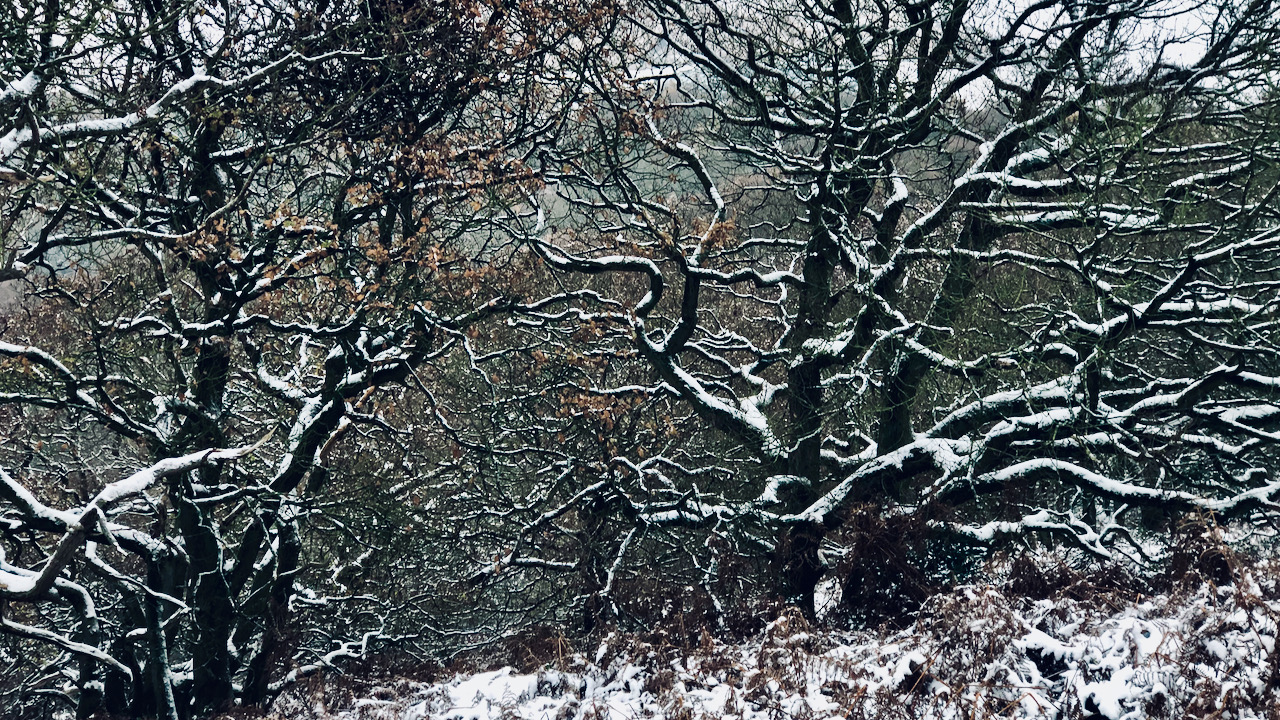The snow persists giving an almost monochrome image of Newton Wood, a predominately oak woodland. The sombre boughs stretch out endlessly, weaving intricate angles and twists, forming a chaotic yet captivating network that reaches both upward and downward.
It is a common belief that oak woodland is the original vegetation of much of lowland Britain before human influence took hold. Yet, since no remnants of that primeval wildwood endure, its true make-up remains a mystery.
Contrary to this long-standing belief that all lowland Britain was once blanketed in a continuous expanse of oak woodland, recent pollen analysis has prompted a substantial re-evaluation. It turns out that the primary tree in the original woodland wasn’t the oak, but the lime, accompanied by hazel, some elm, and, of course, oak. Throughout pre-history, the lime, and to a lesser extent the elm, were selectively cleared.
We have two oak species—the common or pedunculate oak and, here in Newton Wood, the sessile oak. The latter earns its name because its acorns dangle directly from the outer twigs, devoid of stalks or ‘peduncles’.
Historically, woodlands adhered to one of two traditional management approaches—wood pasture or coppice. Wood pasture allowed tall, mature trees to flourish, interspersed with grazing animals. The mature trees were much prized for construction and ship-building.
Coppice, on the other hand, involved regular cutting of trees to ground level and served various purposes, such as tannin extraction from the bark of young shoots, charcoal production, or, in certain regions, as pit props for mining operations.

Leave a Reply